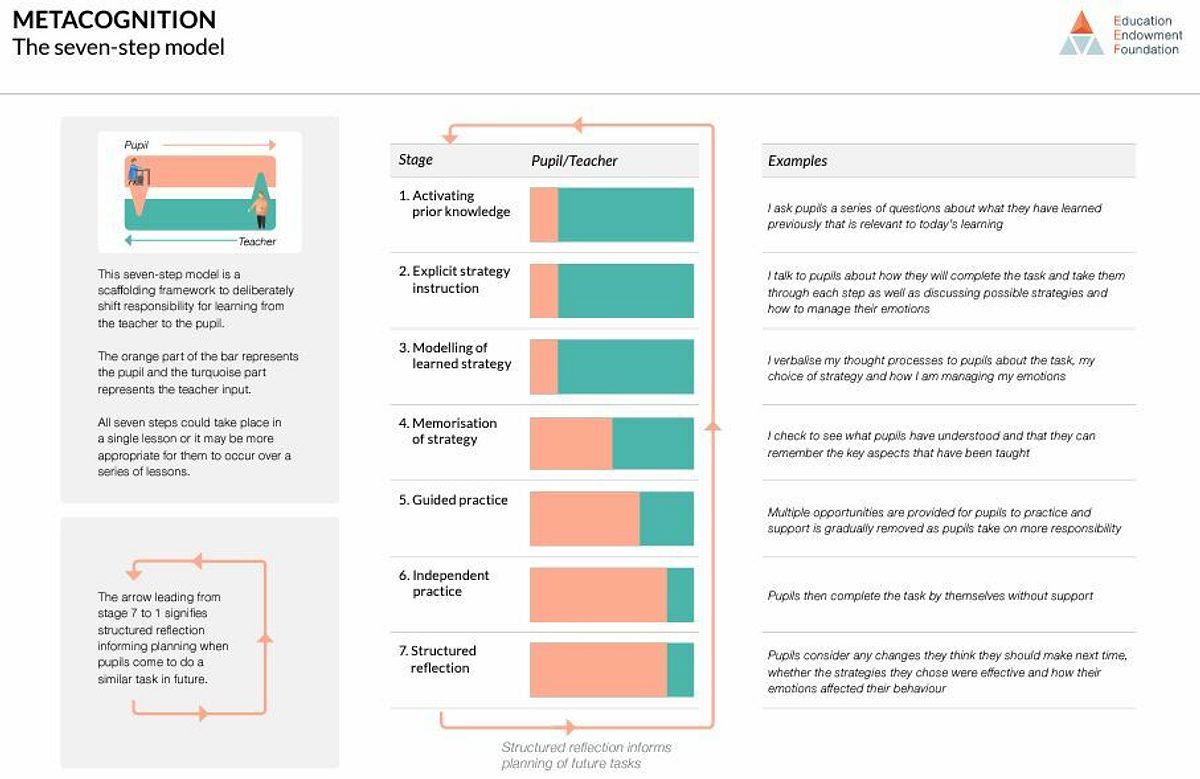‘But why…?’
I vividly remember the rather awkward silence which fell after questions like this one when I first started using ‘the debrief’ to help structure pupils’ reflections on their mathematical problem-solving.
I would go on to ask more specific follow-up questions such as, ‘Why did you choose to start in that way?’, ‘How did you break into the problem?’, or ‘How did you know what it was asking you to do?’
In the beginning, at least, many children were reluctant to answer. They ‘just knew’ or ‘it was in their heads’. They did not have explicit knowledge of the strategies they used, leading many children to resort to guess work, or to adopt the strategy chosen by their neighbour without any real understanding of the rationale behind this.
However, as I incorporated the debrief more and more frequently into my lessons, I began to see a considerable shift. Through my questioning, I prompted children to reflect on the reasoning underpinning the strategies they selected for problem-solving. They were also able to hear the explanations given by others, developing their understanding of the range of options available to them.
Recommendation 3 of the EEF’s ‘Improving Mathematics at Key Stages 2 and 3’ guidance report highlights the importance of encouraging pupils to monitor, reflect on, and communicate their reasoning and choice of strategy. ‘The debrief’ provides an opportunity for us to do exactly this by supporting pupils to engage in structured reflection, within which the teacher uses questioning to support learners to articulate their thinking, and to explicitly identify and evaluate the approaches used.

In contrast with the ‘Think Aloud’ approach (where the teacher narrates their thought processes to model how an‘expert’ learner approaches a problem) in the debrief, responsibility for metacognitive thinking is firmly placed upon the pupil. The role of the teacher is to facilitate this by using questions to elicit thinking of this nature.
Purposeful questions for problem-solving in maths
Questions during the debrief support and encourage pupils to reflect on the success of the strategies they used. They consider how these could be used more effectively, along with identifying other scenarios in which these could be useful.
Many of the questions we can use at this time aim to explore the ‘what’ and the ‘why’ of the strategies employed by pupils in their problem-solving:
- What exactly did you do? Why?
- Why did this help you?
- What worked well? Why?
- What was challenging? Why?
- Is there a better way to…?
- When else might you use…?
- What changes would you make to…? Why?
- What have you learned about yourself and your learning?
However, I also love asking pupils much more open questions such as ‘What have you learned?’. Many times when I have done this with the children I work with, their responses have astounded me! Their responses went beyond just the specific concepts identified for the lesson, but also demonstrating my pupils’ ability to make links across different domains of maths and to prior learning. They also encompassed broader reflections about their metacognition – such as strengths or weaknesses specific to them, the tasks they encountered, or the strategies they had used.
As pupils became more familiar with the debrief, this changed the ways in which they talked about their problem-solving in my classroom. It shifted the focus away from looking simply at the ultimate solution to the problem (or questions like, ‘What’s the answer?’), and towards a richer dialogue in which pupils compared the strategies used and tried to understand each other’s reasoning and approaches.
Using the debrief in my own classroom prompted some real ‘lightbulb moments’ for my pupils. I can remember the excitement of my Year 5 class when we compared different strategies for a problem involving finding percentages of amounts and they really grasped the range of ways in which you could do this. In particular, I remember when one girl held out her hand for my whiteboard pen as she told me that she ‘had another way to do it’ and proceeded to model this for the class. The debrief provided an opportunity to really open up conversations about learning, empowering children to take increasing control and responsibility.
For me, the kinds of reflections elicited through the debrief are arguably the most important part of supporting pupils’ problem-solving. This is where pupils’ reflections stop being about a single problem or lesson, and instead move beyond this to enable pupils to be strategic and effective in their future maths problem solving.
Metacognition: The seven-step model
The ‘Seven-step model’ offers a useful framework to support teachers in developing their pupils’ independence.Uploaded: • 437.4 KB - pdfSeven-step model worksheet
Planning tool to help practitioners explicitly plan how to approach deliberately shifting the responsibility from themselves to the pupil.Uploaded: • 343.1 KB - pdf
Blog
EEF blog: How can we improve children’s problem solving in maths?


Blog
EEF blog: Thinking Aloud to support mathematical problem-solving


Guidance Reports